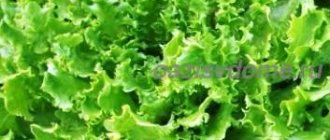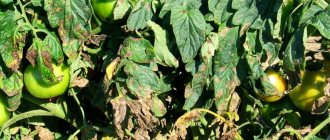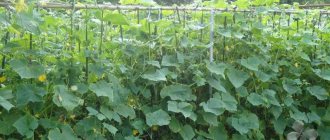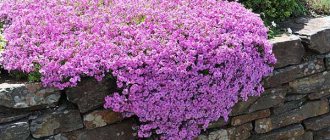Author: Elena N. https://floristics.info/ru/index.php?option=com_contact&view=contact&id=19 Category: Fruit and berry plants Published: June 21, 2018Last edits: November 02, 2020
- Tibetan wolfberry (Lycium barbarum)
- Beneficial features
Common dereza, or Berber dereza, or barbary dereza, or Chinese dereza, or wolf berries, or goji berries (lat. Lycium barbarum) is a woody plant, a species of the genus Dereza of the Solanaceae family. In China, this plant is known as “Ningxia gouqi”, which translates as “Ningxian wolfberry”, and for Europeans “gouchi” sounds like “goji”. In nature, the common wolfberry can be found in China, Tibet, the Himalayas and Russia. At the beginning of the 21st century, goji began to be advertised as a cure for all diseases, having a unique concentration of antioxidants and trace elements. Dereza vulgare was pretentiously called by sellers “paradise berry”, “red diamond” and “longevity berry”. However, research has refuted marketing claims about miraculous goji juice.
Planting and caring for goji
- Planting: sowing seeds for seedlings - in March, planting seedlings in a school - when the first leaves appear. The seedlings are planted in a permanent place every year in the spring.
- Lighting: bright sunlight.
- Soil: any composition and any acidity level.
- Watering: moderate but regular.
- Top dressing: from the second season, compost and complex mineral fertilizer are added annually to the tree trunk circle.
- Pruning: the first few years it is necessary to form the crown of the plant, and in the future it will only be necessary to maintain this shape and carry out sanitary cleaning of the crown. The tree is pruned in early spring, before sap flows.
- Garter: until the bush grows, the lower branches are tied to a support so that they do not lie on the ground.
- Reproduction: seeds and woody cuttings.
- Pests: aphids, Colorado potato beetles and fall armyworm caterpillars.
- Diseases: powdery mildew and late blight.
- Properties: the plant has medicinal properties and is widely used in traditional Chinese medicine.
Read more about growing goji below.
Transfer
Goji can be replanted after the third pair of leaves of the plant appears. To do this, you will need a container of greater depth, which should be at least 7 cm. During transplantation, you need to carefully ensure that the roots of the small plant are not damaged. For better and faster growth, the plant can be fed. For these purposes, both mineral fertilizer and ordinary humus are suitable. The agricultural technology for growing goji berries is quite simple and understandable. Anyone, even a novice gardener, can grow this valuable crop on their own plot.
Botanical description
Common wolfberry is a deciduous shrub up to 3.5 m high with a crown width of up to 6 m. The root system of the plant is powerful, penetrating deeply into the ground and forming many root shoots. The drooping light yellow branches of the wolf tree are studded with thin thorns. The leaves are simple, entire, small, elliptical in shape, light green above, bluish on the underside. The violet-pink, purple or brown-violet bell-shaped flowers exude a mild scent. The fruit is a small oblong berry up to 2 cm long, coral-red, orange or crimson in color. Fruiting begins in the third year of growth, but sometimes earlier.
Chemical composition of the product
Nutritional value (per 100 grams of raw berries)
| Calorie content | 309 kcal |
| Squirrels | 11.1 g |
| Fats | 2.6 g |
| Carbohydrates | 53.4 g |
Nutrient balance (in milligrams per 100 grams of raw berries)
| Beta-carotene (A) | 4 |
| Thiamine (B1) | 11 |
| Riboflavin (B2) | 20 |
| Pyridoxine (B6) | 3 |
| Iron (Fe) | 3,5 |
| Phosphorus (P) | 67 |
| Calcium (Ca) | 155 |
Growing goji in the garden
Planting goji in open ground
Goji wolfberry propagates both by seeds and vegetatively - by semi-lignified cuttings 10 cm long. Goji seeds in the spring, without prior stratification, are soaked for several hours in warm water, and then sown to a depth of 3 mm in a moist substrate consisting of one part of peat and two parts loam. The crops are covered with film or glass and kept at a temperature of 20-25 ºC, preventing the substrate from drying out and a sharp change in temperature in the room. The seedlings usually hatch after two weeks, and as soon as the first shoots appear, the crops are moved to the brightest place, but shaded from direct sunlight. When leaves appear on the plants, they are planted in the garden on a school bed and grown there for a year, securely covering for the winter, and in the spring the young plants are transplanted to a permanent place. Seedlings bloom in 2-3 years, and begin to bear fruit 4-5 years after planting in the garden.
In the photo: Goji berries on a bush branch
If you prefer to propagate goji vegetatively, keep in mind that old, lignified cuttings root faster and more reliably. The lower part of the cut is dipped into a root-forming solution in July-August, after which the cutting is planted in a greenhouse or under film. Until the end of winter, rooted cuttings are kept in a cool place - on an insulated balcony or unheated veranda, and in the spring they are planted in the garden.
- Rose hips: growing in the garden, properties, types
Dereza can grow in soil of any composition and acidity level, but prefers sunny areas with slightly acidic, well-drained soil. The best time to plant seedlings in the garden is spring. A hole for goji is dug 40x40x40 cm in size. If you plant several plants, leave a distance of 1.5-2 m between them. In the soil mixture with which you will fill the hole, you should add 8-10 kg of compost (humus or peat), 150- 200 g of superphosphate and 30-40 g of wood ash (potassium sulfate), after which the composition is thoroughly mixed.
When planting, the root collar of the seedling is buried 1-1.5 cm. After filling the hole, the soil in the tree trunk circle is compacted and watered abundantly, and when the water is absorbed, the surface is mulched with humus, peat, wood chips or bark.
How to care for goji
During the first years, a young goji tree needs good care: the soil in the tree trunk should not be allowed to dry out, but excessive moisture should also not be allowed, especially at low temperatures, since the plant’s still weak roots may be damaged. To prevent this from happening, during rainy periods or when it gets cold, cover the tree trunk circle with film. An adult plant does not react so painfully to high humidity or infrequent watering: it requires additional moisture only during periods of prolonged drought.
For the first year, the goji seedling will need enough fertilizers that were applied during planting, and subsequently it is necessary to annually add compost and a mineral complex to the tree trunk circle.
Growing goji involves the formation of the crown of the plant, since it grows very quickly, reaching a height of 3-4 m. To increase the yield of berries and give the wolfberry an attractive appearance, for the first few years it is necessary to prune it, removing excess branches and shoots and leaving only the most beautiful ones on the bush. strong and equally spaced branches on which fruiting shoulders are formed, and then fruiting branches on the shoulders. In the future, it is the fruiting branches that are shortened, leaving no more than 4 buds on each. This pruning stimulates growth. Most of the harvest comes from last year's goji shoots.
In the photo: Flowering of the common wolfberry or goji bush
Until the bush grows to two meters, tie the lower branches to a support so that they do not lie on the ground.
- How to collect tomato seeds
Among the pests that can annoy gojis are aphids, Colorado potato beetles and fall armyworm caterpillars. An infusion of wormwood will help you get rid of them. Powdery mildew and late blight also pose a danger to the plant, and this usually happens if the plant has not received wood ash as fertilizer. Apply it to the soil when planting, and if signs of a fungal disease appear later, dust the plant with ash on the leaves. If the ash does not help, you will have to treat the gozhi with a solution of a fungicidal drug.
Goji can withstand frosts down to -15-25 ºC, but in a snowless winter the plant may suffer from hypothermia, so it is advisable to cover it well with spruce branches in late autumn. If you are growing a non-winter-hardy variety, it is better to dig up a bush, replant it with a large lump of earth in a pot or container and keep it in the basement at low temperatures above zero until spring.
Seed propagation method
If goji is grown from seeds, the shrub will begin to bear fruit in about 3-4 years. Goji berry seeds are collected from dried berries.
To make it easier to remove them and not damage them, first place the dry fruits in water. They must lie there for some time.
When they become soft, it will be quite easy to get the seeds.
To speed up germination, the seed can be soaked using a growth stimulator.
Next, prepare boxes, pots or other convenient containers and fill their bottoms with drainage. The top is covered with earth. The grooves are made 2-3 cm deep.
Take the seeds and carefully place them on the bottom of the furrows. Sprinkle a little earth on top and cover with glass or film.
For germination, maintain a temperature of 20-25°C.
Seedlings dive at the stage of formation of 3-4 true leaves.
Plants are carefully removed from previous containers.
It is better to replant in separate containers with a small lump of earth.
Next, they are placed in a new place, sprinkled with earth, and watered. Planted in the ground in late spring.
Goji collection and storage
When the goji berries ripen and turn bright red, spread a cloth under the bush and knock down the fruits on it, but do not forget to wear gloves: wolfberry is prickly. The collected berries are cleaned of leaves, twigs and other debris and placed under a canopy to dry. After a while, the stalks are separated from the fruits and they continue to dry them in the shade, without using ovens or other technical devices. The berries need to be stirred and turned over from time to time so that they dry evenly. The readiness of the raw material can be determined by the easily peeling skin. Store the berries in a glass or ceramic container with a lid. Goji fruits can not only be dried, but also frozen and then stored in the freezer. They are used to prepare drinks and bake pies.
Cuttings
Growing by cuttings allows you to get a harvest much earlier than from obtaining goji berries from seeds.
You can make cuttings using layering as follows:
- This method will require a bush over 3 years old. Strong branches are chosen on it.
- They are bent to the ground.
- Next, before the onset of cold weather, the cuttings are cut 10-20 cm long.
- After this, they are planted in a greenhouse; an insulated balcony is also suitable for propagating goji by cuttings.
Types and varieties of goji
As we have already mentioned, the common wolfberry, or goji, is a species of the genus. There are two known varieties of this species:
Tibetan wolfberry (Lycium barbarum)
Or Tibetan goji - a high-yielding form of the plant that begins to bloom and bear fruit in the first year after planting. Tibetan goji berries are drop-shaped, up to 2 cm long, sweet, with a noticeable nightshade flavor. Disadvantages are watery fruits and too large seeds.
In the photo: Tibetan wolfberry (Lycium barbarum)
Chinese wolfberry (Lycium chinense)
Or Chinese goji , a taller, stronger plant with elongated, crisp, sweet berries that are easy to eat and easy to dry. Disadvantages: late entry into fruiting and low winter hardiness.
In the photo: Chinese wolfberry (Lycium chinense)
Recently, varieties of common wolfberry have appeared that are of interest to gardeners:
- We sow greenhouse tomatoes: 2 proven disease-resistant varieties - pink and red
- New Big is an unpretentious, fast-growing and frost-resistant Polish variety that produces its first fruits already in the year of planting. The bright orange berries have a sweet and sour taste;
- Lhasa is an early frost-resistant productive variety of Chinese selection up to 3 m high with arched branches studded with thorns. The plant begins to bear fruit in the second year after planting. The flowers are purple, self-pollinating, the fruits are deep orange, oblong-ovoid, up to 2 cm long and weighing 2-3 g. The pulp is sour-sweet with a barely noticeable bitterness;
- Sugar giant is a spreading, productive and frost-resistant shrub up to 3.5 m high with surprisingly tasty fiery orange berries up to 2.5 cm long. This variety is called Tibetan barberry;
- Sweet Amber is a frost-resistant but heat-loving Chinese variety, bred in 2016, but very quickly gaining popularity. This plant does not cling to supports, but rests on them. This fast-growing bush can reach 2.5 m in height, and its berries become amber-transparent when ripe;
- Superfruit is a lush light-loving shrub up to 3 m high with rich red fruits. Fruiting begins three years after planting.
reference Information
Woody shrub Dereza (Lycium) belongs to the nightshade family. The varietal range includes 80 species of bushes and trees. The plant grows in arid and salty soils.
The shrub reaches 2-3 meters in height. Covered with thorns. Some plant species reach 10 meters in height. The leaf length is up to 8 cm. White, purple or greenish flower petals grow in separate inflorescences.
The flowering phase occurs in summer. This is an excellent honey plant that does not fade throughout the entire decade. The fruits of the plant look like an oblong berry of yellow, red or orange color. Some varieties have black and purple shades. Ripening occurs in mid-summer or early autumn.
The fruit crop contains vitamin compounds of group A and B. The composition contains nicotinic acid and polysaccharides. Due to the content of alkaloids, it is considered a poisonous fruit. Small doses of the plant are used in medical practice. Treat kidneys and liver. Used in weight loss formulations.
In the world there is African, Tibetan, Chilean, Shanghai and Chinese. The name Goji berry is assigned to the Chinese fruit tree. These are “berries of happiness”, which, according to the beliefs of Chinese treatises, promise health, luck and immortality to the person who tastes the fruit. From a medical point of view, the berries are edible. Help strengthen the immune system. Neutralizes attacks of depression and blues.
Dereza grows naturally along road routes. It takes root in forest thickets. It ripens even on wastelands and rocky slopes. Bushes of useful berries are found in Central Asia, Southeast Asia, the countries of Primorye and Central Russia. There are known deposits in Ukraine, the Caucasus and Kuban.
Gardeners are happy to use grafted varieties of Goji trees to decorate the area. Used as a hedge.
The fertility of the plant after 3 years of flowering reaches 10 harvests in 1 year. Each time it is possible to collect from 1-10 kg of berries from one bush. The fruiting phase begins at the beginning of the summer season. Continues until autumn. Dry berries are used for food. Used in cooking. The taste is reminiscent of raisins. But fruits contain more vitamins.
How to brew goji berries correctly.
Top 7 best drugs for weight loss
| Name | Price |
| Black Latte for weight loss | 99 rub. |
| NATURAL Fit Calorie Blocker Powder | 990 rub. |
| Purple tea "Chang-Shu" | 499 rub. |
| Fat burning drops “Honey Spas” | 1980 rub. 99 rub. (until 08/24/2021) |
| Detox cocktail for weight loss | 147 rub. |
| Lipocarnit for weight loss | 990 rub. |
| Reduslim weight loss product | 149 rub. |
Views: 3,718
Properties of goji - harm and benefit
Beneficial features
The composition of “longevity berries” includes zinc, phosphorus, copper, iron, calcium, selenium, germanium, Beta-carotene, vitamin C, amino acids, polysaccharides, antioxidants, flavonoids, steroid saponins, thiamine, riboflavin and other substances necessary for humans.
In Chinese folk medicine, goji berries have been used to treat diseases of the liver, kidneys, reproductive system and eyes. They lower blood sugar levels, preventing the development of diabetes, relieve prolonged insomnia and headaches, restore urinary functions and hormonal balance, eliminating the negative effects of menopause, improve the functioning of the nervous and hematopoietic system, strengthen the lungs, inhibit fatty degeneration of the liver, inhibit candidiasis, pathogenic E. coli and other inflammatory processes in the body. Modern Chinese doctors have experimentally confirmed that goji berries are an aphrodisiac.
In the photo: Goji berries are not only healthy, but also have contraindications
Nutritionists recommend taking goji for weight loss without active effort, since this plant helps improve blood circulation and metabolism, accelerates the breakdown of fat cells and reduces the level of bad cholesterol. To achieve a rejuvenating effect, goji is used for the face in lotions, creams and other cosmetics.
Infusions of fruits and infusions of plant leaves are popular as medicinal preparations.
Contraindications
Unfortunately, some people have an individual intolerance to goji berries, and they should not eat the fruits or use preparations made from them. The product is also contraindicated during pregnancy and during breastfeeding; it is not recommended for children under three years of age. For a healthy person, the norm for eating goji is no more than 25 berries per day. And even if you are not at risk, consult your doctor before using goji for weight loss or other purposes.
How to grow goji berries in the garden
As you know, one plant can be propagated in several different ways. We invite you to consider the main methods suitable for propagating the crop of interest to us.
Goji berries can be propagated both in the form of seeds and by separating woody seedlings from the mother bush.
Table 1. How to propagate a goji berry bush: main methods
| Way | Description |
| Method No. 1 - propagation using seeds | Goji seeds can be obtained from berries, or you can buy them already prepared, peeled. This plant responds well to this method of propagation, responding responsively to the gardener’s care. It is recommended to propagate the plant by seeds as follows:
|
| Method No. 2 - Cuttings | The second method is no less popular, and on the contrary, it is used more readily, as it allows you to get an adult, fruit-bearing plant much faster. Thus, for vegetative propagation, half-woody cuttings are used, the length of which is at least 10 centimeters. Attention: this shoot must be partially covered with so-called old wood. Through cuttings, propagation goes through the following stages:
|
It is best to grow this crop in a greenhouse, however, it grows well even without shelter, but only in the southern regions of the country
As you can understand, a greenhouse will be a favorable and at the same time the only suitable environment for growing goji bushes, since the vast majority of regions of our country cannot offer sufficiently comfortable conditions for growing this crop.
Where to buy supplements
Dietary supplements are sold in pharmacies or online stores. But they are either too expensive or ineffective.
The lowest prices for berries and dietary supplements with goji are in the well-known online store iHerb. From other sellers the cost will be 30-50% higher. You can check it yourself.
There is a discount of up to 10% on iHerb using this promotional code:
AGK4375
Activate
The promotional code is activated in the cart after adding the 1st product and is valid only for the 1st order.
Dietary supplements from network companies
In this category we included drugs from companies whose production of dietary supplements is a non-main branch of production.
Table 2 – Chain companies producing goji supplements
| Company | dietary supplement | Manufacturer country | Volume, pcs. | Minimum price in rubles. |
| Argo EM-1 | KuEMsil Fitness Goji | Russia | 60 | 440 |
| Sashera-Med | Native vitamin and mineral complex Naturonic goji | 356 | ||
| Argo Company | Hoodia Goji | 100 | 930 | |
| Candies with herbal extracts Khudia Goji |
The companies are not as popular as iHerb supplements, so we cannot confirm or deny their effectiveness.











